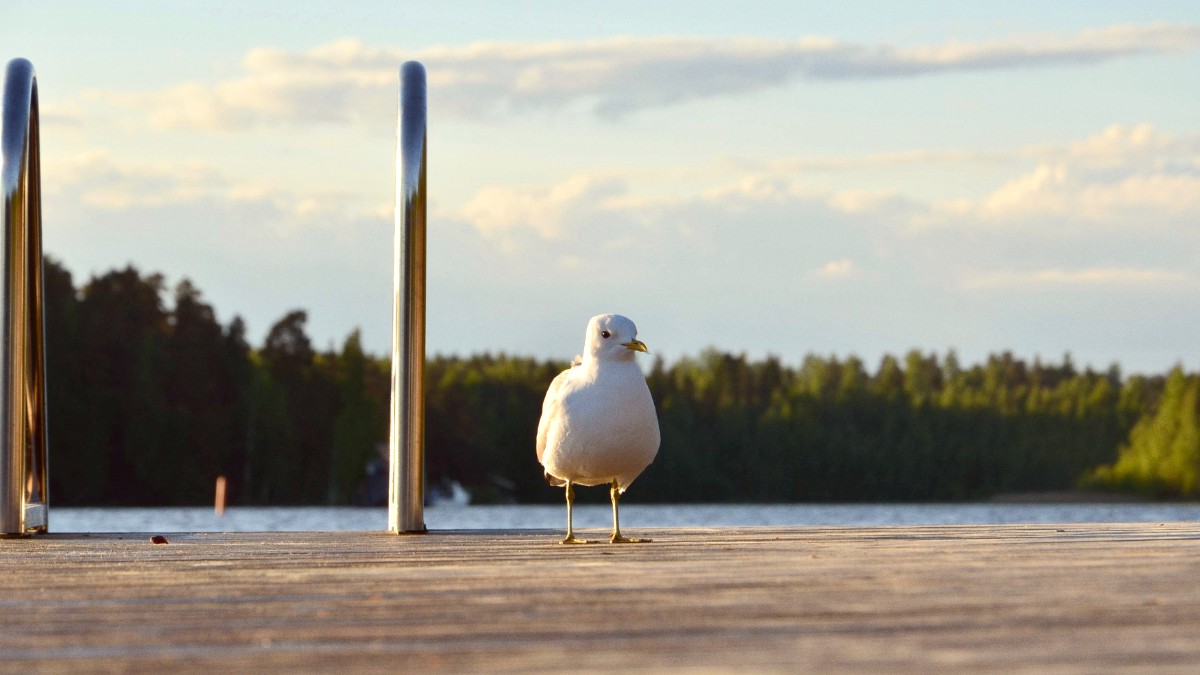
Southwestern Finland, Finland
Finland has four distinct seasons. Tampere's climate varies throughout the year, with distinguished temperature shifts and changes in precipitation.
Winter (December-February) is the coldest, with average temperatures from -10°C to -3°C (14°F to 27°F) and common snowfall. Spring (March-May) brings a thaw, with temperatures rising from -2°C to 12°C (28°F to 54°F). Summer (June-August) brings mild to warm temperatures, 15°C to 22°C (59°F to 72°F), and long daylight hours. Autumn (September-November) sees temperatures drop from 10°C to 0°C (50°F to 32°F), with foliage.
Outdoor pursuits like hiking, cycling, and lake cruises are most pleasant from June to August. Winter sports like skiing, ice skating, and snowshoeing are best from December to March, when snow and ice conditions are reliable.
Sauna with ice swimming is available year-round, most striking and popular in winter when lakes freeze. City sightseeing and museum visits are always an option, notably comfortable in summer and early autumn.
Slippery conditions
Winter boots with good grip prevent slips on ice. Cold temperatures drain electronics batteries faster.
Snow and ice make walking surfaces slippery. Move with caution.
Rain showers possible
A light, packable rain jacket prepares you for sudden summer showers.
Finnish weather can change quickly, so dress in layers.
Preparation for all seasons
A windproof and waterproof jacket comes highly recommended, regardless of season.
No specific weather hazards, just variable conditions.
Finland is part of the Schengen Area, simplifying travel within many European countries. The Schengen Visa (Type C) allows travelers up to 90 days within any 180-day period for tourism, business, or family visits. Citizens of many countries outside the EU/EEA, like India and China, need a Schengen visa. For longer stays, like for work or study, a long-stay visa or residence permit (Type D) is necessary.
Citizens of the United States, Canada, United Kingdom, Australia, New Zealand, Japan, South Korea, and many other nations can enter Finland for up to 90 days without a visa. As of mid-2025, these travelers will acquire an ETIAS (European Travel Information and Authorisation System) authorization prior to travel. This is a pre-travel authorization, not a visa.
Passport valid for at least three months beyond your intended departure from the Schengen Area, with two blank pages.
Evidence of sufficient financial means and proof of where you will stay (e.g., hotel reservations).
Proof of your planned departure from the Schengen Area.
Mandatory for all Schengen visa applicants. Coverage for medical emergencies and repatriation with minimum €30,000.
For visa applications, IVisa or VisaHQ can assist with the process.
Finland is a relatively high-cost destination compared to some other European countries, but smart strategies lead to managed spending.
The official currency of Finland is the Euro (€). ATMs, known as "Otto" machines, are widely available. Credit and debit cards (Visa, Mastercard, Amex) are accepted almost everywhere, even for small purchases. Cash is rarely a necessity.
Prices here are estimates and vary. Tipping is not customary or expected in Finland. Service charges are usually part of the price.
These figures give a clearer idea of costs for various elements of your Tampere travel experience.
Finland is a very safe country with high standards of public health.
No specific vaccinations are mandatory for entry. Check routine vaccinations (MMR, DTaP, Polio) are current. Consider Hepatitis A/B. TBE vaccination might be suitable for extensive outdoor activities in forested areas. Consult a travel health professional.
Cold/Flu: Wash hands regularly, carry Hand sanitizer. Ticks: Present in forests (spring-autumn), wear long clothing, use insect repellent, check body for ticks. Sunburn: Use Sunscreen (SPF 30+), protective clothing. Slips/Falls: Icy conditions in winter, use appropriate footwear with grip. Dehydration: Consume water or fluids regularly, especially in cold climates.
Finland boasts an excellent healthcare system. Call 112 for all emergencies (ambulance, police, fire); operators speak English. Tampere University Hospital (TAYS) is the main public hospital. Private clinics like Mehiläinen and Terveystalo are also options. Pharmacies ("Apteekki") are widespread.
Drinking Water & Food Hygiene
Tap water in Tampere and throughout Finland is of excellent quality and safe to drink. No need to buy Bottled water. Finland upholds high food hygiene standards; restaurants and markets are well-regulated.
Image: A public sauna building by a lake in Tampere. View Image Source
Check LifeStraw for water filtration products and Adventure Medical Kits for first aid supplies.
Finland, and Tampere specifically, registers a very low crime rate. It ranks among the safest cities globally.
Tampere is safe day and night. Violent crime is rare. Petty crime like pickpocketing is uncommon, but keep valuables secure. A Money belt comes in handy for documents and cash. Consider Pacsafe for anti-theft bags.
All neighborhoods in Tampere are generally safe. No areas are commonly advised to avoid due to crime.
Finland has a very low risk of major natural disasters. However, seasonal hazards exist.
Travel insurance is mandatory for Schengen visa applicants and highly recommended for all other travelers.
Coverage for medical emergencies, trip cancellation/interruption, lost luggage, and personal liability. Compare reputable providers for suitable coverage.
Call 112 for Police, Ambulance, or Fire. This number operates 24/7, and operators speak Finnish, Swedish, and English.
For a lost/stolen passport, contact your country's embassy in Helsinki. For lost/stolen credit cards, contact your bank immediately to cancel.